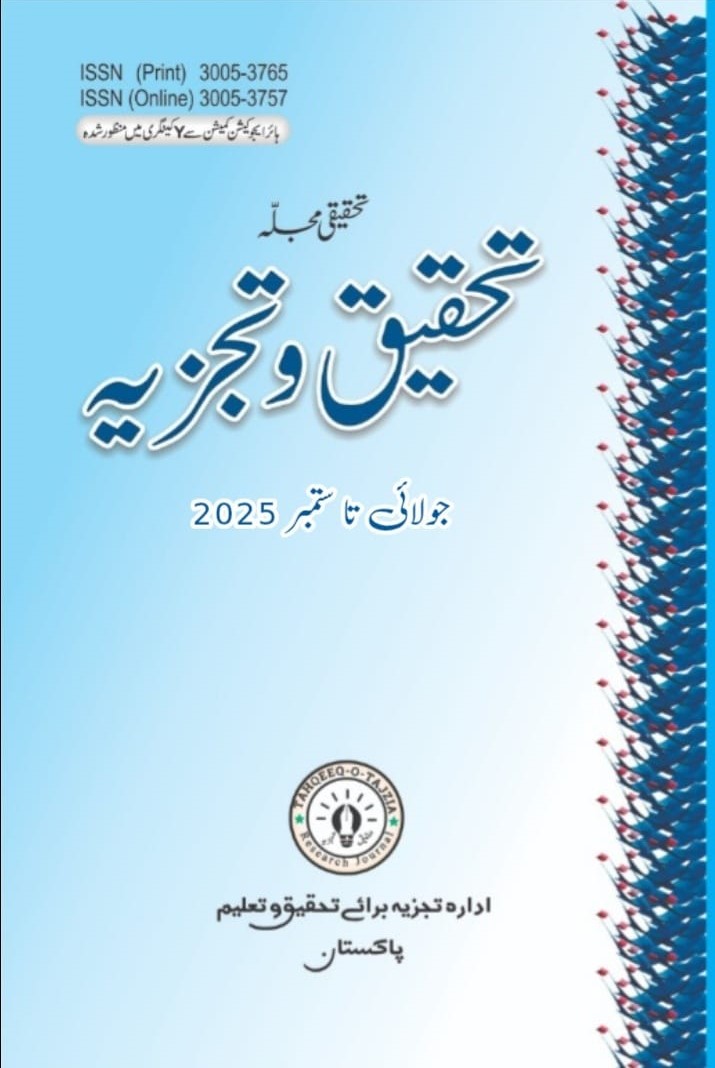Technique Of Epistolary And Dairy In Urdu Novel
Keywords:
Urdu Fiction, Epistolary, Dairy, Novel, Narrative, Writer, Story, Flashback, ForeshadowingAbstract
The diary and epistolary techniques are among the most intimate and subjective forms of narrative used in the Urdu novel. These techniques allow writers to explore the inner world of characters through personal records and letters, giving readers a direct insight into emotions, conflicts, and psychological depth. The diary technique presents events as entries written by a character, often in solitude, which creates a confessional tone. This method reduces the distance between narrator and reader, making the narrative more authentic and introspective. It helps in portraying psychological realism, especially in modern Urdu fiction where self-analysis and internal struggle are central themes.The epistolary technique, on the other hand, unfolds the story through letters exchanged between characters. Through letters, the writer captures different voices, tones, and contexts, thus enriching the narrative texture.In Urdu literature, writers like Razia Butt, Quratulain Hyder, and Ismat Chughtai have effectively used these techniques to enhance realism and emotional depth. .Overall, the diary and epistolary techniques in Urdu novels serve not merely as stylistic devices but as tools of psychological exploration, helping novelists to bridge the gap between the inner self and the outer world of social experience.
References:
- Owais Ahmad Adeeb, Usool-e-Afsanah Nigari, Nai Dehli: Urdu Publishing House, 2007, p. 33.
- Soheil Ahmad, Dr., Saleem-ur-Rehman, Muntakhab Adabi Istilahaat, Lahore: GC University, Department of Urdu, 2005, p. 75.
- Mumtaz Shireen, Novel aur Afsanay mein Taqneek ka Tanavvu, Mashmoola: Urdu Afsanah Riwayat aur Masail, Lahore: Sang-e-Meel, 2002, p. 58.
- Abdul Haleem Sharar, Jooya-e-Haq, Lahore: Sang-e-Meel, 2014, p. 342.
- Qazi Abdul Ghafar, Laila ke Khutoot aur Majnun ki Diary, Lahore: U Publishers, 2010, p. 117.
- , p. 214.
- Majnun Gorakhpuri, Chiragh, Hyderabad Deccan: Idara Ishaat-e-Urdu, 1945, p. 22.
- Mirza Azeem Baig, Khutoot ki Sitam Zareefi, Mashmoola: Majmua Mirza Azeem Baig Chughtai, Lahore: Sang-e-Meel, 1997, p. 111.
- Aziz Ahmad, Gurez, Islamabad: Al-Hamra Publishers, 1st ed., 2000, p. 57.
- , p. 25.
- Jameela Hashmi, Talash-e-Baharan, Lahore: Sang-e-Meel, 2011, p. 115.
- , pp. 117–118.
- , p. 305.
- , p. 307.
- Intizar Hussain, Chaand Girhan, Lahore: Sang-e-Meel, 2002, p. 71.
- , p. 93.
Downloads





